All the Fun of the Fair
Valencia’s Fería de Julio will be 146 years old this year. When UB40, Salif Keita and Ara Malikian play concerts in the Viveros Gardens it will be light years away from how the Feria’s stuffed shirt originators would have envisioned things back in the late 19th century. To survive this long, the Feria has had to move with the times.
The first Feria de Julio took place in Valencia in 1871 from 21 to 26 July. It was to be a festival of the new middle classes in a city which had just torn down its medieval walls and was, figuratively and actually, breaking free of its past and looking forward to a new economy of industry, a mass agriculture and export. This was a brave new steam-powered and high-financed world with its own new plush areas of the city like the Ensanche and the Gran Vías and its own magnificent cathedrals to commerce, the Estación del Norte, the Central and Colón Markets and the Clocktower building at the port.
The newly rich business classes were desperate to make Valencia a modern, cosmopolitan, European city and it was only a matter of time before the powers-that-be sanctioned the establishment of a city fair and exhibition. Traders and farmers were pushing for the creation of a fair where their wares and the products of the new Valencian industries could be exhibited. In turn, the Ayuntamiento wanted to keep the richer families in the city as long as possible before they went off to their country houses or on their European tour and the well-heeled families themselves wanted a chance to meet and greet and show off their wealth. A Mary Poppins-style “jolly ‘oliday” was seen as the perfect opportunity to swan around in a big hat, a frilly dress and a parasol, and so the Feria de Julio was born.
These first ferias included various agricultural shows; livestock in the river (between the Puente de la Trinidad and the Puente Real) and fruit, vegetables and flowers in the Viveros gardens. There were also exhibitions of the latest products manufactured by Valencian industry at the newly built Medicine faculty in what is now Avenida Blasco Ibáñez and fine art exhibitions in the present Centro Cultural del Carmen. On top of this, you could also attend bullfights, take part in a carnival parade or a shooting competition, watch a tug-of-war competition for cart horses and of course, this being Valencia, there was a fireworks display every night in the Alameda.
All the big names came out; Cirilo Amorous, the Marqués de Campo, Félix Pizcueta (in short, most of the big bods who named streets after themselves around Ensanche) and from the world of the arts, Sorolla, Benlliure and Blasco Ibáñez all supported the event, making it a must on Valencian social calendar. Great ornate pavilions were constructed along the Alameda by the Ayuntamiento and different well-to-do societies like the Ateneo Mercantil and the Real Sociedad Económica de Amigos del País. This was the real heart of the whole event, where the people that mattered could take a stroll and the young debutantes could dance and cool off with a horchata or a barley water.
Over the years new attractions were added, such as football tournaments, regattas and swimming races across the port. In 1907, there was even an air race from Valencia to Alicante for those magnificent men in their flying machines. The Battle of Flowers or to give it its name rather grander official name, the “Fiesta Floreal Valenciana”, first took place in 1891. The daughters of the wealthy families of the city were paraded along the Alameda in carriages where the discreet but seriously passionate young gentlemen of the time (those from the right families, of course) would throw them flowers and read them (usually embarrassingly awful) romantic poetry. The whole thing was originally devised by Don Pascual Frígola just for the chance to parade his daughters in front of the Great and the Good along the Alameda.
By 1939, after the Civil War, the old confidence was gone, there wasn’t any money to throw around and the old class structure was disappearing. Any show of ostentation like the old-style Feria de Julio was frowned upon. That should have been the end of it, but somehow the Fería hung on. Things, however, had to change. The pavilions were still set up in July along the Alameda throughout the years of the dictatorship but they became much less exclusive, no longer attracting the elite of society and were more likely to be run by local fallas or neighbourhood associations trhan by the top-hatted, paternalistic societies of before. The grand old Ayuntamiento pavilions became woodworm-ridden and unsteady and, eventually, declared unsafe. They were left to decay in the Viveros gardens until they were finally destroyed by a fire in 1981, a testament to the Feria’s steady decline from its turn-of-the-century heyday.
The main site of the Feria and its pavilions was moved from the upmarket Alameda out to Avenida de la Plata in 1974 and was shunted around different parts of the city until finding its present resting place down at the port. The great shows of yesteryear, just like the social classes that spawned them, fell into decadence or all but disappeared. That said, Valencians in their mid-40s and beyond may still remember with certain nostalgia partaking of a cool horchata in one of the creaky old pavilions on a hot July night with Nino Bravo blasting out over the loudspeaker.
Little now remains of the old Feria de Julio. The Tradition of the Battle of the Flowers is one of the few aspects of the original Ferias which have survived, although these days it’s just a load of people having a laugh throwing flowers at some other people going past on a carriage (and there is nothing wrong with that). We also still have, of course, those two essential staples of any Valencian festival, the fireworks and the brass bands. There are art exhibitions and bullfights and at the heart of the modern Feria are the concerts at the Viveros. Benicassim it is not. Most of the acts seem to be chosen by middle-aged politicians and civil servants trying to relieve their youth, hence the appearance in recent years of Bob Dylan, Joan Manuel Serrat, the Beach Boys and Pat Metheny. That said, these are big acts and the atmosphere at an open air gig on a balmy night in July is well worth sampling.
There is a Jazz Festival at the Palau de la Música which has been tacked on to the Feria (in fact, anything happening in Valencia in July seems to get incorporated) which, along with performances in the Palau itself, includes a free concert in the elegant surrounding gardens in July (bring your picnic blanket and a few cold tins).
There are also regular, more barrio-related lower key events in the Parque del Oeste, the Jardín de Ayora and other parts of the city. These include children’s theatre, traditional dance groups and a medieval fair selling medieval kebabs, medieval lampshades, scented candles and pulpo a feria. The evening in the barrios often ends with the ubiquitous sound of a verbena band thumping out pasodobles and coplas at window-rattling decibel levels late into the night. Not sure what the Marqués de Campo would have made of that. ¡Viva la Feria de Julio!
David Rhead and José Marín
Related Post
This site uses Akismet to reduce spam. Learn how your comment data is processed.



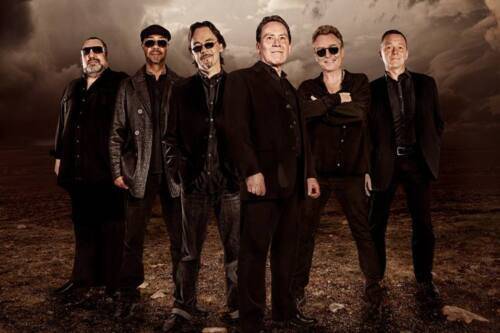
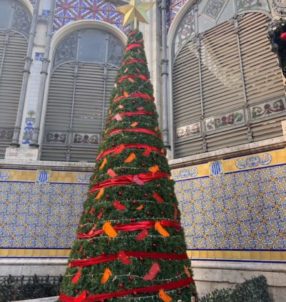
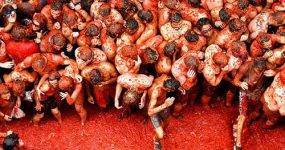
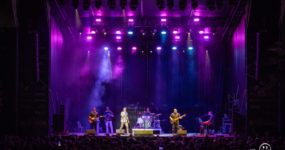

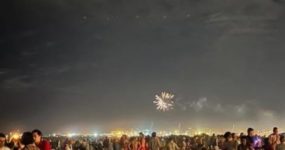

















Leave a comment